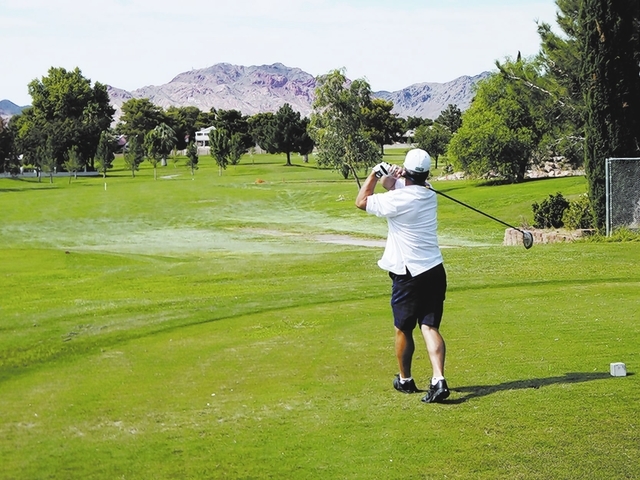Don’t let overseeding ruin your chance at bad play

I don’t know if you have noticed what’s happening to golf in the valley. It’s frightening: shutting down golf courses, turning players away with no other alternative than to go bowling. It is not a pretty sight.
It’s overseeding.
Overseeding refers to a maintenance procedure in which grass seed is spread on top of existing grass to enhance new growth and make the courses greener.
Here’s what the Golf Course Superintendents Association of America has to say: Overseeding is commonly done by courses that use Bermuda grass, which goes dormant in winter, turning brown. After aeration, verticutting and scalping the fairways, ryegrass is then spread on top of the Bermuda grass and carefully tended for a couple of weeks.
Further, many people allude to overseeding as a cosmetic procedure, and they would be correct. Truth be told, a beautiful, lush green golf course for facilities that rely on winter play to be successful is a must, not only for locals, but for golf-starved players from northern climes searching for quality games.
The downside: Courses close anywhere up to three weeks. So that brings me to the point. I was driving to the end of Lake Mead Boulevard, meeting my golf cronies for a round at Tuscany Golf Club in Henderson, only to be met with a closed golf course. Obviously some signals were mixed up. What to do?
In what only can be described as the highest level of executive decision making, we altered course and headed down the road to Boulder City Golf Course. But I could sense the thinking of the two players in the group: trade in a course with a 132 slope and 72.4 rating for one with a 123 slope and 70.7 rating, and it should be easy pickings for our on-course wagering.
Boulder City Golf Course was established in 1973 and was designed by Billy Casper and David Rainville. It’s a par-72, plays to 6,606 yards from the tips and is your typical municipal course. Should be ripe for scoring a personal best for all of us.
The first sign of trouble was walking to the pro shop. Two veteran golfers were unloading their clubs and discussing their rounds.
“How many golf balls did you lose today? I lost four when I couldn’t find them in the rough. They must not have cut that rough in weeks,” said one. Just two old-timers complaining about their scores, nothing more.
Well, it didn’t take long. After teeing off from No. 1, I lost a ball in the rough. Penalty stroke already, geez.
Despite being a muni course, there are a lot of challenging and fun holes. Hole 6 on the front is the No. 1 handicap hole on the course. It’s a 416-yard, par-4, pretty much straight away. Except that the driver landing zone is guarded by traps on the left and water on the right.
Most definitely the most enjoyable hole on the course is No. 8, a 275-yard par-4. It’s the chance for the big boys to prove their prowess by driving the green. But wait a minute, cowboy, it’s a dogleg right guarded by two water hazards that also are to the right. Landing on the green requires massive carry. We all tried; no one succeeded, and we penciled in one par and 3 bogies.
On the back, No. 17 proved challenging, a 186-yard par-3 with a lateral water hazard to the left. I love par 3s.
All in all, it was a most satisfying substitute for a day of golf. And, yes, the rough did take its toll with lost balls and twisted golf club heads, but hey, it’s better than working.
The 19th hole was typical, cold beer, outrageous excuses, golf lessons cursed, and “How I’ll get you next time” talk.
But it was Chris who asked the most pointed question of the day: “How many golf balls did you lose today? I lost four when I couldn’t find them in the rough. They must not have cut that rough in weeks.”
It never ends.
John Asay is a longtime golfer and local freelance writer. Contact him at jasay@reviewjournal.com.